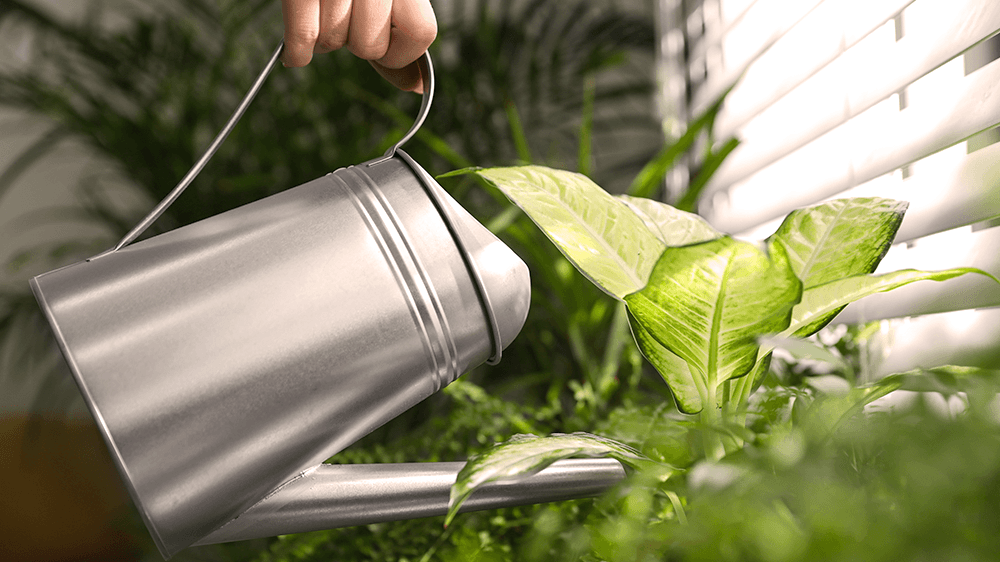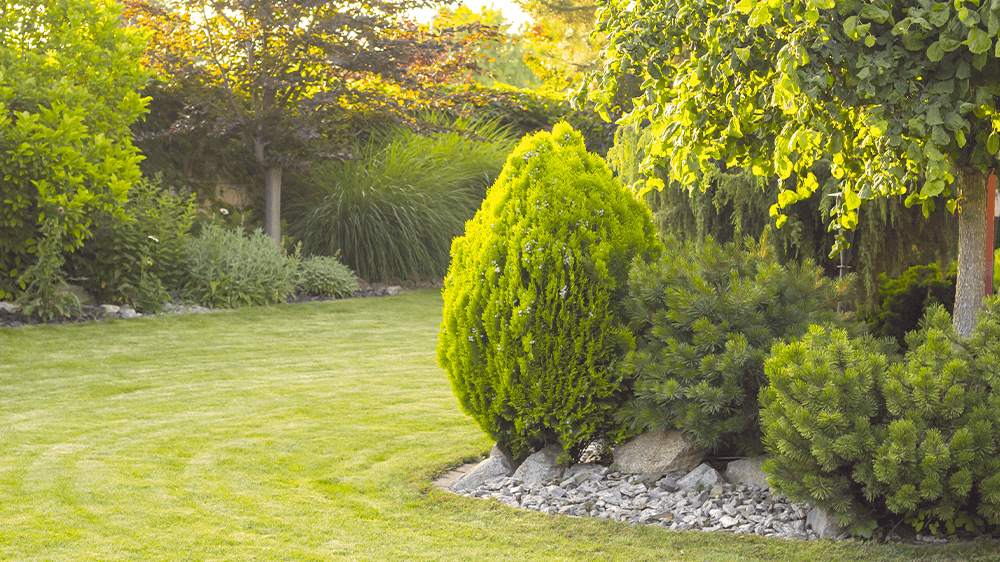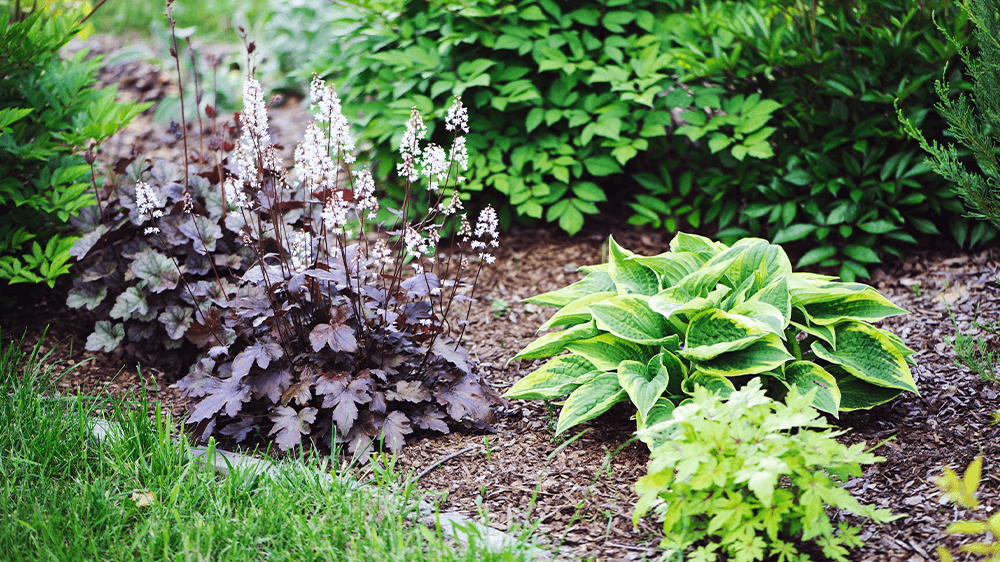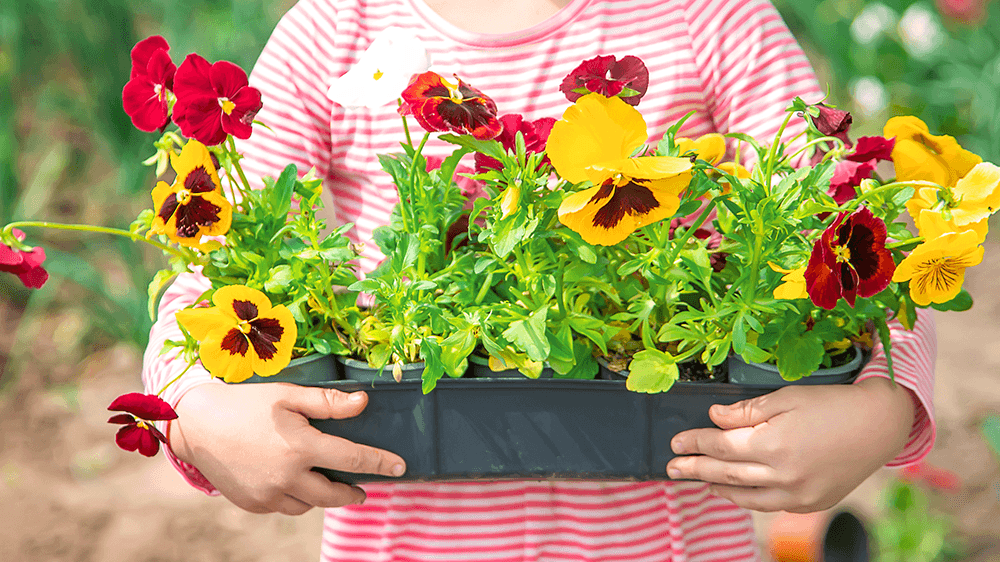
It certainly isn’t an uncommon experience for new plant owners to mourn over an overwatered succulent—figuring out how much to water all your plants can be tricky! Overwatering and underwatering your plants can be detrimental, but if you know their distress signs, you can change your watering routine and help your plant bounce back. Here’s a breakdown of all the signs of overwatering and underwatering, from succulents to shrubs and trees, and all your other plants at home.
Signs of an Overwatered or Underwatered Succulent
A succulent you’ve overwatered will exhibit the following signs:
- Mushy leaves
- Yellowing or translucent leaves
- Blackening leaves due to rot
- Dropping leaves
A thirsty succulent will show these signs of dehydration:
- Thinning, shriveled leaves
- Brown, dry, dead leaves at the bottom of the plant
- Soft, flat leaves that have lost their plumpness and firmness
Succulents don’t need as much water as typical houseplants, and require loose, chunkier potting mix to ensure quick moisture drainage. Remember, they’ve adapted to live in desert climates, and they have moisture reserves in their leaves and stems!

Signs of Overwatering or Underwatering Houseplants
Overwatered houseplants like pothos, monstera, or spider plants will give you these visual cues:
- Floppy leaves and stems
- Brown leaf tips
- Mold
- A mushy stem near the base of the plant
- Fungus gnats
- Yellow leaves near the bottom of the plant
- A heavy pot full of water
If you’re having trouble with overwatering indoor plants, consider switching to containers with drainage holes, then placing them on trays. This way, excess moisture exits the bottom instead of collecting and developing bacteria.
This is how a parched houseplant will let you know it needs a refill on water:
- Wilting
- Brittle stems
- Drying leaves
- Stunted growth
- Dry soil shrinking into a cylinder
Aqua globes and self-watering pots can be particularly useful if you tend to be forgetful with watering your plants.

Signs of Overwatered or Underwatered Trees and Shrubs
If your trees or shrubs are getting too much water, you’ll notice the following signs:
- New growth coming in yellow or withering
- Fragile leaves that break easily
- The soil surrounding the base of the plant is always soggy
An under-watered tree or shrub will display these signs:
- Curling leaves with browning edges
- Changing to fall colors ahead of schedule
- Leaf drop
- Sun-scorched leaves
- Sparse growth
- Off-color leaves
- Leaves that are smaller than usual
Newly planted trees and shrubs need much more water than those that are well-established. If you’re having trouble keeping up with the watering, a soaker hose will be extremely helpful for irrigation!

Avoiding Overwatering and Underwatering Perennials
The tricky thing with perennial plants is that the signs of underwatering are often similar to the signs of overwatering. If your perennials appear to be:
- Wilting
- Turning brown
- Stunted in growth
Then you should evaluate the soil around your plant. Is it dry and crumbly, even several inches below the surface? Give it a thorough soak with the hose. Is the soil drenched and soggy? Reduce the amount you water.
Perennials tend to be pretty drought-tolerant, and sometimes they may wilt from hot weather but will bounce back within a day. To ensure you’re watering your perennial an appropriate amount, avoid watering small amounts every day—this will only cause spindly, weak root growth. Instead, water generously once or twice per week, unless there is heavy rain. Let the top few inches of soil dry out before watering again.

Signs of Overwatered or Underwatered Annuals
Annuals in full sun tend to need lots of water, especially during hot weather. Daily watering is often necessary unless your annuals are in the shade. If you’re watering too much or too little, your annuals may display:
- Fading color
- Stunted growth
- Browning leaf tips
- Wilting
Water your annuals early in the morning to help keep their soil temperature and moisture level more consistent throughout the day.
Best Practices for Watering Your Lawn
Maintaining a consistent watering schedule for your lawn is important, not just to keep it hydrated, but to keep it free from pests and diseases. Your lawn is more susceptible to problems if it’s either dehydrated or soggy. Water your lawn early in the morning for best results, and don’t cut it too short. Dethatch and aerate your lawn twice a year to improve moisture drainage and prevent water from pooling. Keep an eye out for signs of fungus, which often appears as stripes along individual blades of grass.
Don’t let one case of an overwatered succulent dissuade you from adding more cool plants to your collection. Visit one of our garden centers in St. John and Frankfort to see what’s new for the season. Our experts will be happy to provide you with watering instructions for all your latest picks!

